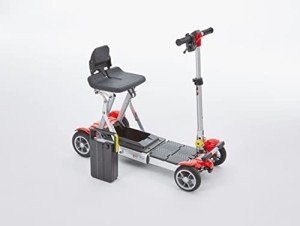What Is The Reason Mobility Aids Is The Right Choice For You?
Understanding Mobility Aids: Enhancing Independence and Quality of Life
As society continues to age and individuals increasingly look for ways to preserve independence, the need for mobility aids has actually never been more significant. Mobility aids, which include a variety of devices designed to assist individuals with walking or moving, play a crucial role in promoting mobility, improving security, and improving overall lifestyle. This blog site post will check out the various types of mobility aids, their advantages, factors to consider for choice, and address some often asked questions.
Types of Mobility Aids
Various mobility aids are readily available, each developed to deal with specific needs. The following table sums up some of the most common types of mobility aids and their functions.
Kind Of Mobility Aid
Description
Best Suited For
Key Features
Canes
A portable stick offering support and balance.
People who require minimal help.
Light-weight, portable, adjustable height.
Walkers
Four-legged frames supplying stability.
Those requiring substantial assistance while strolling.
Foldable, some with wheels, added safety functions.
Rollators
Wheeled walkers with a seat for resting.
Individuals needing mobility with the alternative to rest.
Brakes, baskets for individual items, adjustable height.
Wheelchairs
Chairs with wheels for individuals with minimal mobility.
Those not able to stroll or requiring extensive assistance.
Manual or powered options, personalized seating.
Scooters
Motorized devices for larger ranges.
People with limited endurance however needing self-reliance.
Various sizes and styles, typically transportable.
Crutches
Support devices positioned under the arms or forearms.
Individuals recovering from lower limb injuries.
Adjustable, lightweight, requires upper body strength.
Stairlifts
Mechanical devices for moving in between floorings.
Users dealing with challenges in multi-level homes.
Customizable for various staircases, automated.
Advantages of Mobility Aids
Mobility aids offer an array of benefits that can substantially improve the lives of people facing mobility difficulties. Some notable benefits consist of:
Increased Independence: Mobility aids empower people to move easily without relying on others for assistance, consequently improving their self-confidence and self-esteem.
Improved Safety: Using mobility aids can decrease the risk of falls and injuries, specifically for older adults or those with balance concerns.
Improved Quality of Life: By facilitating mobility, people can participate in social activities, attend occasions, and delight in life more completely, adding to better psychological and mental health.
Rehabilitation Support: After surgery or injury, mobility aids supply necessary support and stability, aiding in healing and rehab procedures.
Ease of access: Many mobility aids are designed to be utilized both inside your home and outdoors, guaranteeing that individuals can browse different environments with ease.
Factors to Consider When Choosing Mobility Aids
Picking the appropriate mobility help requires mindful consideration of a number of factors, including:
Factor
Considerations
User's Needs
Assess the level of mobility required; consider whether the user requires short-term or long-lasting support.
Physical Limitations
Assess the user's strength, balance, and coordination to determine the very best type of aid.
Setting
Consider the primary environments where the help will be utilized, such as home, outdoors, or particular terrains.
Weight and Portability
Guarantee that the picked device is manageable relating to portability and storage, particularly for outside use.
Budget plan
Mobility aids been available in a range of costs; consider insurance protection and readily available financing choices.
Adjustability
Choose aids that can be changed for height and convenience to accommodate growth or altering needs.
Regularly Asked Questions About Mobility Aids
1. How do I understand if I need a mobility help?
Numerous factors can signal the requirement for a mobility aid, such as trouble strolling or balancing, fatigue while standing, or a current surgery affecting mobility. Consulting with a healthcare expert can offer guidance tailored to individual requirements.
2. What kinds of mobility aids are covered by insurance coverage?
Protection differs in between insurers, however many provide options for resilient medical equipment, which typically consists of wheelchairs, walkers, and some kinds of walking canes. Contact your insurance coverage company for specific coverage info.
3. Can mobility aids be utilized outdoors?
Yes, lots of modern-day mobility aids are designed for outside use. Rollators, scooters, and some walkers are geared up with features for stability and ease of usage on various surface.
4. How do I preserve my mobility aid?
Regular upkeep includes looking for any wear and tear, ensuring that parts such as wheels, brakes, and frames are operating correctly, and cleaning up the devices as needed. Following folding mobility scooters with remote key is vital for safety.
5. Is there a risk of becoming depending on mobility aids?
While some users might end up being reliant on mobility aids, they are designed to promote self-reliance and mobility. Gradually using a mobility help can boost self-confidence and help retain physical strength and coordination.
Mobility aids are vital tools that empower individuals to get rid of physical difficulties, promoting self-reliance and improving quality of life. By understanding the different types of mobility aids readily available, their advantages, and important elements for consideration, households and caretakers can make educated decisions that best fulfill the requirements of their liked ones. With the ideal support, those with mobility difficulties can lead satisfying and active lives, complimentary to explore the world around them.
